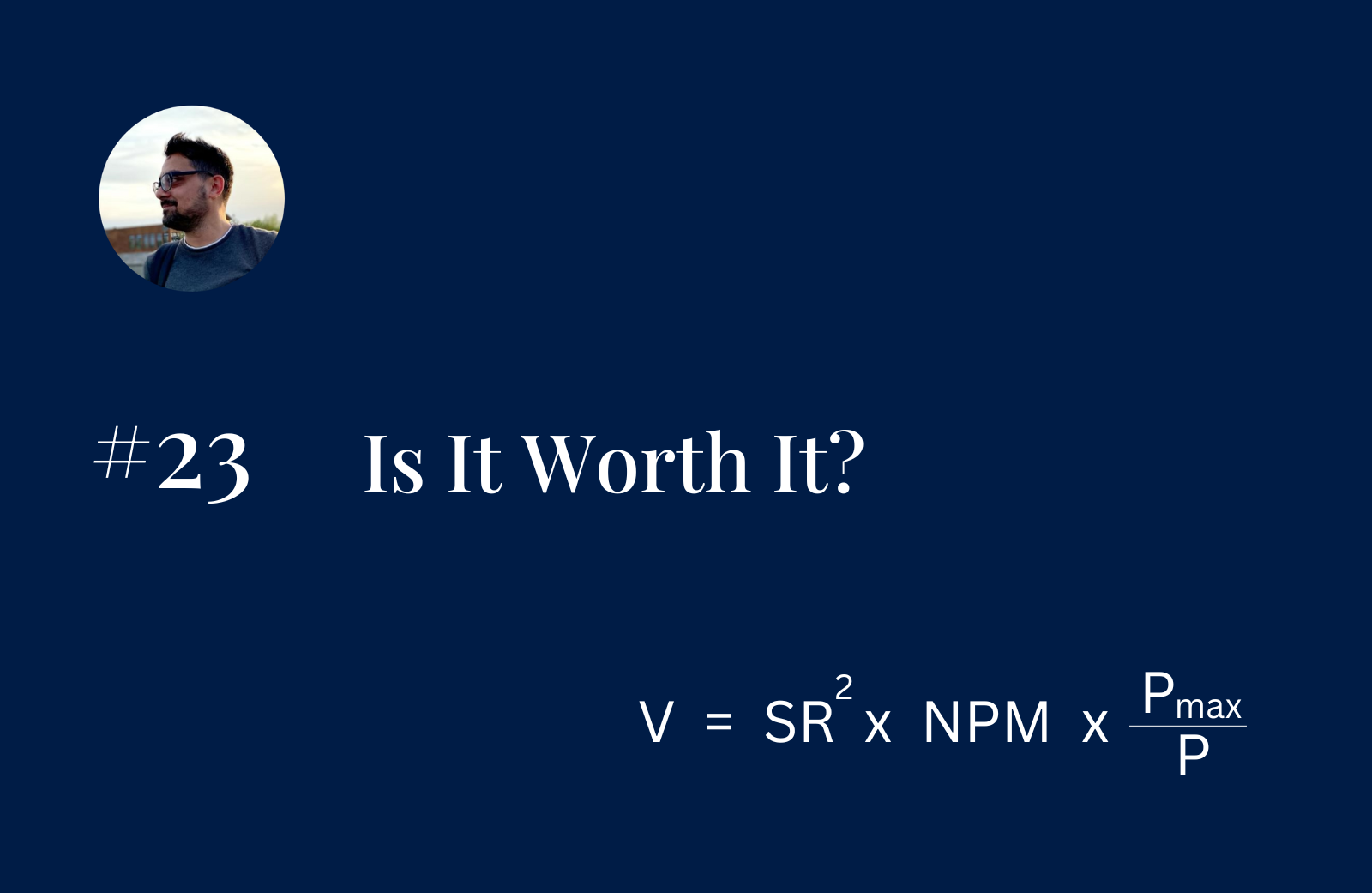
18 Sep How to Evaluate If a Startup Is Worth Investing In?
Sep 18, 2024
Let’s say we have two startup ideas and wonder which one is worth investing in.
There are too many factors to consider regarding such a decision:
- The team members. How qualified is your team?
- Market size. How large is the potential market for your product or service?
- Competition. Who are your direct and indirect competitors?
- Costs. What are the startup costs and ongoing operational costs?
- Revenue Projections: How much revenue do you expect to generate over specific periods?
- Risk Assessment: What are the potential risks and challenges, and how will you address them?
- Business Model: How will your business make money?
- Scalability: Can your business model be successfully replicated on a larger scale as the business grows?
- Adaptability: How quickly can your business adapt to changes in the market or industry?
The list can go on and on, however, for this particular publication, I would like to come up with a simple way to assess a new startup idea. Not only that but I’d like to come up with a quantitative measure that can be our guidance on whether it is worth investing in a startup.
The Equation
Our quantitative measure is going to be represented by an equation involving four metrics:
- Success Rate (SR): This represents the likelihood of success of the business. For example, according to TechReport, 10% of startup businesses fail in just the first year of operation. In that particular case, SR is 10%/100% = 0.1. However, take into account that the success rate depends on your niche and the location of your customers. Therefore SR will vary depending on the type of business you are running.
- Net Profit Margin (NPM): The net profit margin is calculated by subtracting Revenue from Costs and dividing the result by the Revenue. This index represents how much of our initial investment has been returned within a certain period.
- Period (P): This is the required time for the development of the product and entering the market. The shorter the period, the better, because that means that our business is going to enter the market quicker and it is more likely to profit sooner.
- Maximum Period (Pmax): This is the maximum period we set as a deadline. This period can also be determined based on statistical data showing the time required for the business we are developing to enter the market. If P is greater than Pmax, that’s an indication of an issue.
The equation is the following:

Examples
Let’s not leave that equation hanging in the air but let’s apply it with some figures.
We have three startup ideas in mind. Fortunately, they all have equal Net Profit Margins. The reason to oversimplify the equation by choosing the same NPM for all three cases is that it is obvious that the higher the net profit margin, the more likely we are to pick that particular business idea. So, I’d like all three ideas to have equal NPM and to explore the case when the success rates and the periods are different.
For all three business ideas, the success rate, maximum period, and the period are as follows:
Idea 1:
- Success Rate = 0.1 (this represents 10%)
- Net Profit Margin = 0.3 (this represents 30%)
- Max Period = 1 month
- Period = 1 month
Idea 2:
- Success Rate = 0.1 (this represents 10%)
- Net Profit Margin = 0.3 (this represents 30%)
- Max Period = 1 month
- Period = 1/30 months (this represents 1 day)
Idea 3:
- Success Rate = 0.9 (this represents 90%)
- Net Profit Margin = 0.3 (this represents 30%)
- Max Period = 6 months
- Period = 6 months
The value of each business – after using the equation is the following:
- Idea 1, Value = 0.003
- Idea 2, Value = 0.09
- Idea 3, Value = 0.243
As you can see, the winner here is the third idea. It may take much longer to develop, however, the chances of success are 90%. Of course, this success rate may sound ridiculously high, but it may be a result of the fact that our business is directly connected to certain business circles with whom we have already negotiated certain conditions.
Comparing the first and the second idea, we can see that the second idea is the winner because the success rates and the net profit margins are equal, however, the second idea requires just a day to be launched on the market. Therefore, within a month if I build and launch 30 ideas similar to the second one, I am going to have 30 ideas each with a 10% success rate. That means that if 90% of all ideas fail, I may end up with three ideas that succeed. That makes a lot more sense compared to building the first idea and hoping for the best.
Final Words
I knew that before, but now I have expressed it with an equation and numbers.
If you want to earn real money and build a business, investing in a single startup is akin to gambling. You have a high chance of failure and losing money.
It makes a lot more sense to either invest in multiple startups at once or a business with a high success rate and, of course, a high net profit margin.
That brings me to the final point of this article.
If you are young and have time ahead of you, working on a startup can be considered an experience, and you should not hope for big profits. On the other hand, if you are older, working on a startup could be considered a sign of gambling tendencies in you, unless you already know venture capitalists and people with money who are willing to support you.
